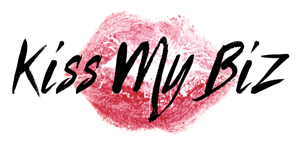Press release writing doesn’t have to be hard, as long as you take the time to learn how to write a press release correctly. Here you’ll find a list of the basic parts of a press release, how to write each section of your press release, and even see a sample press release laid out for you. Follow the instructions below to learn how to write the different parts of a press release:
Header
When writing a press release, you should always include a header with the contact person’s name and contact information (such as phone number and email address). Beneath the contact information, you should type FOR IMMEDIATE RELEASE. (For online press releases, contact information may be placed at the bottom.)
Headline
You should write a catchy, yet informative, headline (or title) for your press releases. This should be centered a few lines below your header information, and can be placed in all bold type. While some people like to use all CAPS when typing a headline, you should avoid that. Many online news services (press release distribution sites or newswires) won’t accept a title in all caps.
Summary
This is an optional 1-4 sentences briefly summarizing the news angle of a press release. This is traditionally added to news releases when the company plans to utilize online press release distribution sites or newswires. If the release is being distributed manually offline (such as via fax), a sub-heading can still be used in its place.
Dateline
Every press release you write should have the date included. The dateline usually occurs in one of two places: either under the header and before the headline, or at the beginning of the press release body, along with the city and state. For example: New York, NY – March 14, 2006 – ‘Body of your press release here.’
Press Release Body
The body of every press release that you write should answer the questions of who, what, when, where, and why. Ideally, these questions will be answered in the first paragraph of your press release, and you’ll expand upon the details in a following paragraph. Quotes are often effective in the body of a press release, as long as they’re not testimonials (not promotional in nature).
Boilerplate
At the end of your actual news, you should include a standard boilerplate. This can be a simple paragraph talking about the business, organization, or individual presenting the news found in the press release. It’s your opportunity to give background information and statistics about who you are and what you do.
Call to Action
Add a line after your boilerplate similar to: “For more information, please contact Your Contact Name at Your Phone Number.” This can simply be a repeat of the contact information presented in your header.
Media Instructions / References
At the very end of your release, before the closing, you should include any details about photos or other materials you’ve included or referenced (such as naming the individuals in the photo), and include any media instructions if the release is in reference to an event they may be interested in covering (such as where they can park and set up their equipment).
Closing
You should always end a press release with ### or -30- centered at the bottom of the page. That tells the reader that they’ve reached the end of your release, and there are no additional pages. If you do have more than one page because of addenda being attached or because it’s a long release, you should use the -more- tag at the bottom of every page but the last one.
